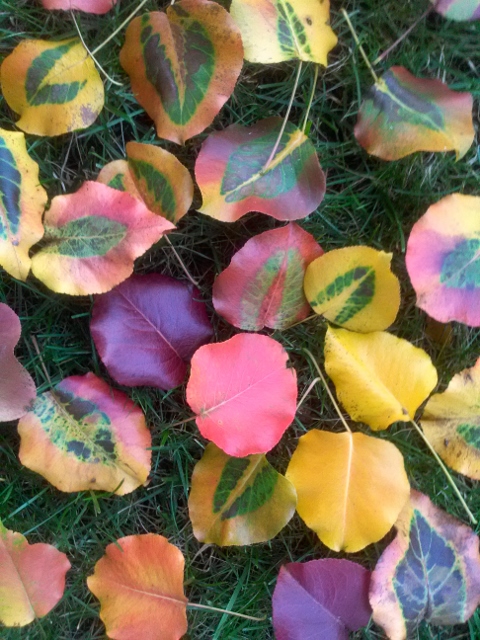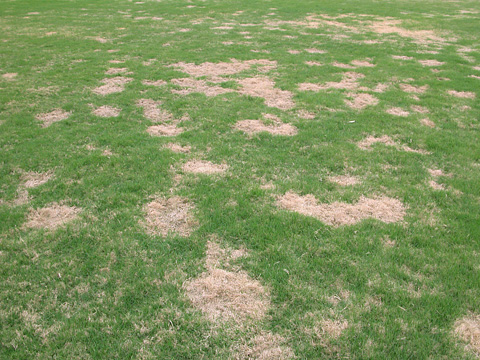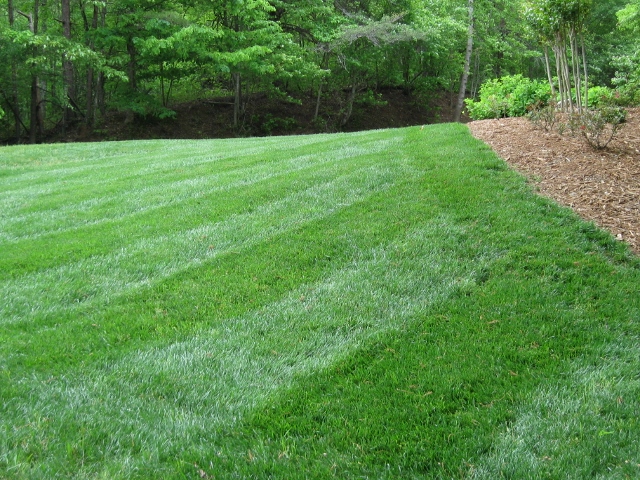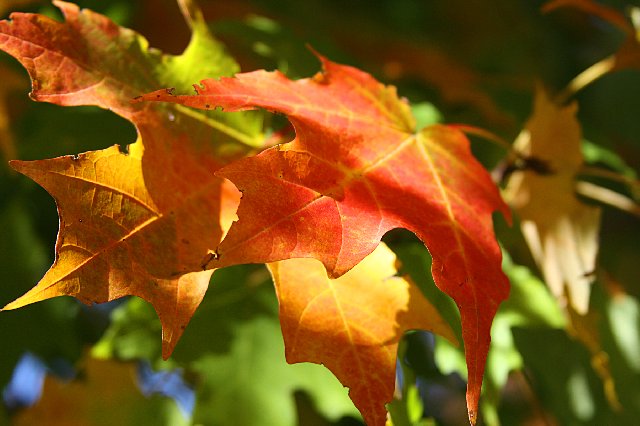|
|
TurfWinter Landscaping & Lawn Care in the South
Along with fall and winter seasons come leaf fall. LMC becomes extremely busy during late fall and early winter with blowing and collecting leaves for our clients. Leaves are collected from lawns, planting beds, and paved areas every visit during the leaf season and placed at the curbside for pick up by the City of Gainesville Solid Waste Division or we dispose of the leaves on the client’s composting/dump area. Any leaves which must be removed from site will be transported to LMC’s composting facility. Mulching: After leaf fall and the collection and disposal of leaves, LMC becomes extremely busy with applying mulch to planting beds and natural areas during the winter months. Pine straw mulch or various types of bark mulches are applied as needed. Mulch is not only utilized for aesthetics, it also benefits plant growth by retaining soil moisture, moderating changes in soil temperature, and weed suppression. Pruning: Once ‘leaf season’ is over there are many pruning tasks that must take place while or before the mulching is going on. Some of these pruning tasks that take place in mid to late winter are: Pruning trees such as raising tree canopies for mower clearance and safety; pruning crape myrtles as necessary – (LMC’s policy - we do not severe prune crape myrtles unless necessary or if they need to fit a specific space.); cutting back groundcovers such as liriope and cleaning up daylilies and spent perennials; severe pruning (‘cutting back hard’) those receptive plants to re-establish plant boundaries; pruning ornamental grasses that are so numerous in the southern landscape; and pruning landscape plants such as certain hydrangeas, roses and butterfly bushes. Seasonal Color Care: We are fortunate to have a climate that allows the installation of certain annuals that remain hardy through our winter months and then provide a beautiful spring flush of color. Installation of winter hardy annuals such as pansies, violas, snapdragons and ornamental cabbages and kales takes place in October. Inspections and care of color plantings such as applying fertilizers to encourage flower production, weed control, identification of diseases and insects, and removal of spent blooms continues throughout the winter months. Landscaping (Tree Installation) In general, LMC encourages landscaping, especially most deciduous tree installations to be done during the late fall/winter months in our area when the rate of water loss from planted trees and shrubs is much less than if installed in the spring and summer months. A fall/winter installation in our area gives the plants time to become established before the summer’s heat, humidity and water stresses set in. Landscape Management Company provides landscaping and lawn maintenance services to clients throughout North Georgia. Contact us today for more information on winter landscaping and lawn care. Posted: December 5th, 2014 | Permalink Fall Lawn Care in the SouthTurf Care (Mowing) In the fall, it’s important to know what type of grass you have and how it will react to the cooling temperatures. Proper turf care depends on whether you have cool or warm season grass. Fescue, the South’s cool season grass, thrives in the fall, just as it does in the spring. This turf will enjoy vibrant and healthy months in the fall, but will require more mowing and maintenance. Our warm season bermuda/zoysia grasses, on the other hand, grow best in the summer months. As summer fades into fall, these grasses becomes sparse and brown, requiring little mowing, but losing their lush summer vitality. Core Aeration and Over-seeding of Fescue Lawns Fall is the ideal time for getting your fescue lawn aerated and over-seeded. Aeration loosens up the compacted soil and allows the grass to absorb more oxygen, water and nutrients. Grass germinates and roots itself more effectively in an aerated lawn, which you can take advantage of by having your lawn over-seeded along with soil aeration. The germination of fescue grass is most effective in the fall. Once your lawn has been aerated and over-seeded, the grass will have the winter and spring to flourish and develop strong roots which will help it survive our harsh southern summers. Leaf Blowing The fallen leaves that scatter our lawns and driveways are a yearly reminder of fall’s namesake. When the blankets of leaves start to form in late fall, be sure to have dead leaves blown and collected to keep lawns and pavement clear. Place bagged leaves at the curbside for pickup, or drop them off at a composting/dump area. Hardy Fall Annuals There are a number of resilient, colorful annuals that can survive the South’s fall weather. If you are looking for a beautiful splash of color in the fall, consider installation of pansies, violas, snapdragons, ornamental cabbages and kales. Tree Installation Because late fall is when the rate of water loss from planted trees and shrubs is at a minimum, this is the best season for the installation of most trees — deciduous in particular. If planted in the spring or summer, however, trees and shrubs are more susceptible to water deprivation. Fire Ant Control Fire ants build shallow mounds in lawns and often remain undetected until a person gets unknowingly too close. They are active during the fall and can pose a serious hazard to individuals in the vicinity. Professional fire ant control is important to maintaining a healthy and safe lawn in fall months. Landscape Management Company are experts at providing comprehensive lawn care services for southern lawns in fall. To learn more about the services that Landscape Management Company offers in North Georgia, please contact us today! Posted: September 22nd, 2014 | Permalink Spring Dead SpotThe recommendation to help control Spring Dead Spot is to treat the turf in the fall with a fungicide when the disease is active. The goal is to decrease the presence of disease with fall fungicide applications. Two treatments are required during the fall season and timing is determined by soil temperature. We have seen the disease disappear after several seasons of treatment. There is no quick fix for Spring Dead Spot. Aeration, as many as three times during the growing season, has proven to be beneficial. The first application of fungicide to treat Spring Dead Spot needs to be applied during September and the second should follow later in the fall. Turf grass researchers emphasize not to expect control in the first year but fungicide treatments in combination with proper cultural practices will gradually decrease disease and complete control may eventually be achieved. Posted: September 11th, 2014 | Permalink Summer Lawn Care in the SouthAs soon as things begin to warm up in spring, it doesn’t take long for things to really heat up. Summer time in the South is long, hot and dry and this can take a toll on your landscaping.With some extra care and maintenance, it’s still possible to keep your lawn looking green and beautiful year-round. Here are a few tips to help your lawn withstand the heat this summer. Mowing Bermuda and Zoysia are good warm weather turfs and do great in the South. Properly mowing these turfs is a primary concern during the long summer months. Warm season turf should be mowed at a 1-to-2-inch mowing height. Keep in mind that mower blades should be sharpened frequently to achieve a quality cut. It is important to note that Fescue, a cool-season turf, does not grow much during the summer. Areas with this type of turf will naturally look thin due to the summer heat, and will not require a great deal of maintenance. Weed Control The use of post-emergent herbicides to kill those unwanted weeds, such as nutsedge, dallisgrass and crabgrass, will keep your lawn looking beautiful all summer long. Apply these weed control products at the beginning and end of each summer to delay their return. Aeration of Bermuda Like in the spring, aeration should be performed on Bermuda lawns again in the summer. Aeration reduces soil compaction commonly caused by foot traffic and mowing, improves the soil’s ability to accept nutrients provided by fertilizer and improves the decomposition of grass clippings and thatch. Fertilization and Mulching It’s important to apply a slow-release fertilizer on Bermuda and Zoysia during the summer growing season. The nutrients in the fertilizer will enhance turf color and help it withstand the high temperatures. Freshen up your plant beds by adding pine straw for a more finished look. Insect and Disease Inspection The spread of insects and diseases can quickly damage plant foliage. You should routinely inspect plants and turf for signs of insect infestation as well as irregularities in color, which is often a sign of disease. A common disease we come across in the summer is Brown Patch which is often associated with Fescue turf. Other Garden Tasks In addition to the tasks above, there are a few regular garden tasks that should be performed each week. These include, watering, trimming and pruning shrubs as needed and the removal of spent blooms from annuals to keep them from blooming throughout the summer months. Need help protecting your lawn this summer? Request a quote from the experts at Landscape Management Company! Posted: May 23rd, 2014 | Permalink Spring Lawn Care in the SouthAdditionally, the right planting and maintenance tasks will also vary depending on the season. Here, we will outline how to choose the right turf for the South and how to care for your lawn and plants during the spring season. Turf Choosing the right turf is very important to make sure that you have grass that will survive the temperature and climate during the summer months ahead. The southern area of the country is located within the “turf transition zone.” This means that the climate allows the use of both cool season (Fescue) and warm season (Bermuda/Zoysia) grasses. However, because weather conditions can fluctuate to extremes, all turf grasses are susceptible to environmental stresses. Fescue Fescue performs and looks its best in spring and fall. Fescue lawns will naturally thin as a result of summer heat and other environmental stress so expect to see this in the summertime. Bermuda and Zoysia Bermuda and Zoysia perform and look best in late spring through early fall. These grasses are completely dormant in the winter and lose all chlorophyll which results in the turf turning a light brown color. However, they fare very well during the harsh summer months making them a good pick for southern landscapes. Spring Turf Care When it comes to spring turf care, it’s important that all winter landscape tasks are finished before the spring. Be sure to make sure that you take into consideration what tasks need to be done during the fall and winter to prepare for spring. Let’s talk about what maintenance jobs actually need to be completed during the spring season. Here are several tasks that will need to be completed. Mowing Fescue performs and grows well in the spring and should be mowed weekly at a three to four inch mowing height. This height encourages a deep root system which helps to strengthen grass. In mid to late April, you will generally start to see the warm season grasses, Bermuda and Zoysia, begin to change back from brown to green as they transition out of their winter, dormant season. This is called “greening up.” These warm season lawns should be mowed weekly and at a one to two inch mowing height during late spring and summer. Scalping Scalping is a mowing process that is done primarily on Bermuda lawns in early to mid-spring or just before the Bermuda grass starts to green up. It involves the removal of excess, dead turf leaf matter to promote grass greening up sooner by allowing sunlight to warm the soil surface. Scalping also helps to prevent thatch and is done after all chance of frost is past. Core Aeration Another spring maintenance task on warm season turf is core aeration. Aeration is performed by coring type aerators that penetrate the soil surface and remove and redeposit small columns of soil. Aeration reduces soil compaction (caused by foot traffic, mowers, etc.); improves the soil’s ability to accept oxygen, water and nutrients provided by fertilizer; enhances decomposition of grass clippings and thatch that accumulate at the soil surface. Fertilization and weed control In early spring, it’s important to apply a slow release fertilizer to fescue turf. The same should be done to warm season grasses (Bermuda and Zoysia) in late spring. All turf grasses should be treated with a weed controller in the spring as well. Landscape Service Needs All the previously mentioned landscape maintenance tasks are specific to turf care. The following are some plant maintenance tasks that should be completed during spring. Disease and Insects You should always make it a point to inspect plants for disease or insect problems such as fire ants. Check the color and condition of the leaves and the soil surrounding the plant to make sure you don’t spot any irregularities in color or any insects. Spring and Summer Flowers Mid April is the perfect time in the South to add some spring color to your lawn with spring and summer flowers. Plan your selection carefully around the most summer hardy flowers. These will perform the best and endure the drought, heat and humidity stresses of southern summers. Trees and Shrubs Early spring is a good time for installing landscape plants such as trees, shrubs and perennials. However, there needs to be sufficient watering to get these plants through the dry summer months. It's also important to to prune and maintain the plants you install. Some trees may do better installed in the fall or winter so be sure to research the type of tree you are wanting to plant to see when is the best planting season. To learn more about the services that Landscape Management Company in offers in North Georgia, please contact us today! Posted: March 20th, 2014 | Permalink End of Summer Lawn Care TipsFirst Things First Did you know that the summer months last from July to September? People commonly mistake the summer months to be June through August due to do school year schedules but the summer months (and the heat) last much longer than you may think. Nevertheless, summer is through in September and your lawn should be treated with that in mind. Service and clean lawn care tools Summer usually means cutting the grass a lot but before you put away the lawn mower for the colder seasons, it’s a good idea to get it serviced so that it’s in good condition for storage. The last thing you want is to pull out the mower after several months only to find out it has rusted or isn’t working properly. Consider getting the blades sharpened (this will make your job much easier) and getting the oil changed so that it’s in its best condition for when you need it again. Don’t forget any other tools that you used throughout the summer such as trimmers and pruners. These should be cleaned and oiled where needed and put away in a dry storage place so that they are protected from moisture and don’t rust. Watch out for pests Spring and summer are popular times to do a lot of planting and landscaping. Keep an eye out for insects and pests as they can easily destroy all of your hard work and precious dollars you’ve spent. If you’re noticing any brown spots in your lawn, this could be a result of an insect problem. Try pulling out a clump of grass from a dead area in your yard and inspect the roots. If they look rotted, it’s probably due to a pest problem. However, if they look to be intact, it’s most likely due to lack of water. Seeding The end of the summer is the perfect time for seeding your lawn and fixing those dead spots if you need it. Whether it’s been a long draught of a summer or you just have a few brown spots in your lawn, re-seeding can bring your yard back to life. As the summer rolls to an end, the temperature typically drops. This gives the new grass the perfect climate to grow back plush and green. Also as the temperature is cooler, there are fewer bugs and fewer weeds to worry about destroying the new grass. If you have any questions regarding lawn maintenance, please contact Landscape Management Company today! Or, if you would us to come service your yard, you can request a quote and we’ll get back with you shortly! Posted: September 30th, 2013 | Permalink |



 All services offered by Landscape Management continue year -round, even though specific landscape tasks change as the seasons change. A LMC maintenance crew is scheduled to visit a client for service and inspections a minimum of every six to ten days.
All services offered by Landscape Management continue year -round, even though specific landscape tasks change as the seasons change. A LMC maintenance crew is scheduled to visit a client for service and inspections a minimum of every six to ten days.


